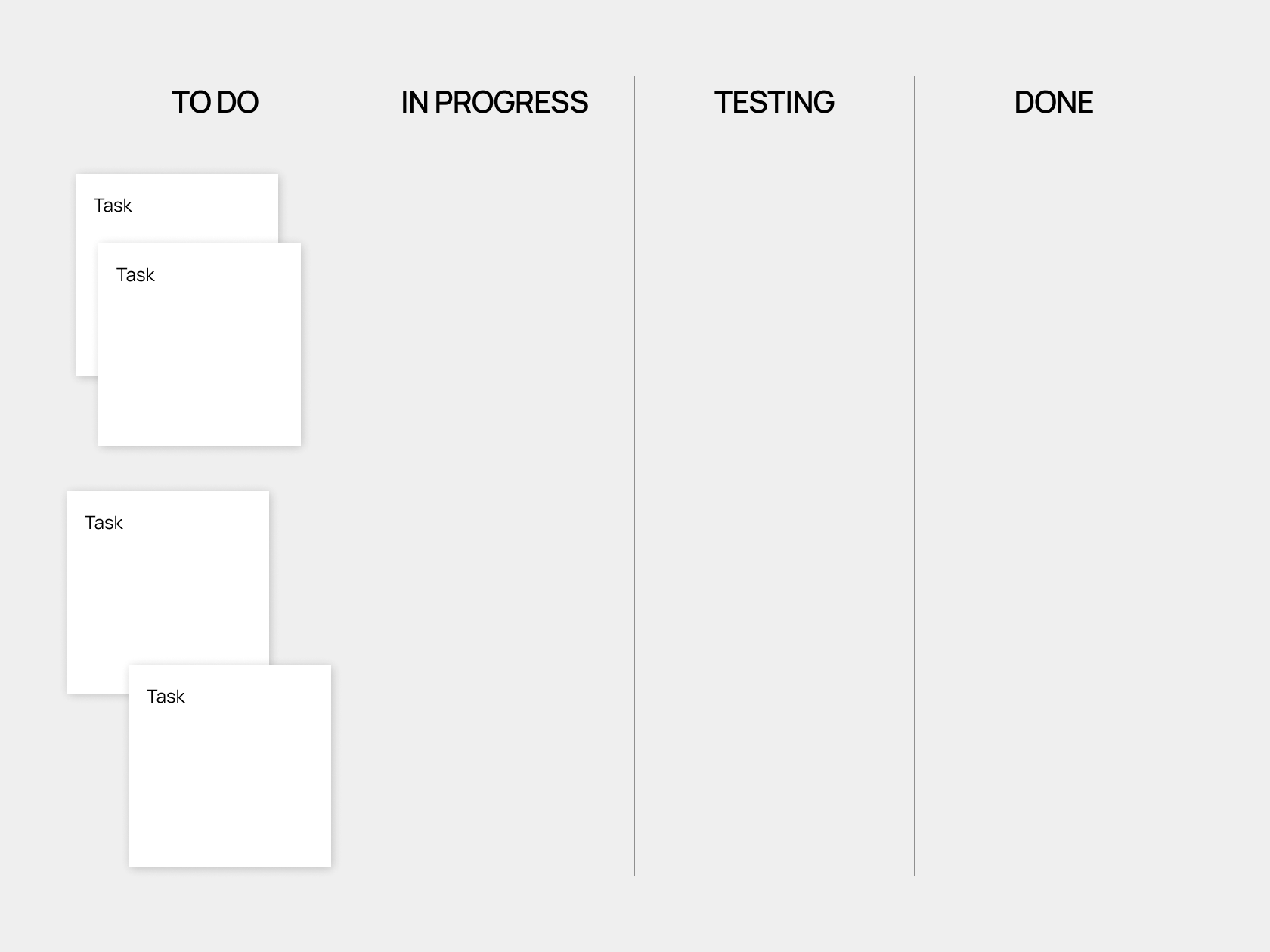When you are at the very start of your project, you must understand that its success will depend on many factors, not the least of which is the correct choice of development approach.
For example, teams practicing an Agile development methodology often hesitate in choosing a specific method for its implementation. Usually, the choice is between Kanban and Scrum. In many ways, they are similar, as they are aimed at breaking the project into small subtasks and constant optimization. At the same time, Kanban and Scrum also have a number of differences that ultimately determine the advisability of their use in a particular project. Below, we will overview the Scrum vs Kanban difference to help you choose the best option from these two.
Key takeaways
- If you need to minimize the project budget and speed up time to market, consider Kanban
- If the requirements for the project are not yet exact and their list will be expanded over time, choose Scrum
- Use a hybrid method that combines these two approaches to maintain Scrum practices and benefit from Kanban's task visualization
What Is Kanban?
Kanban is a project management framework (or method) within the Agile methodology. It aimed to reduce downtime or ineffective actions on the part of all members of the development team. This method is based on a Kanban board (physical or software-based) that visualizes the individual stages of the project in the form of columns. In this case, the tasks necessary for the implementation of the project are described on cards, which, in turn, gradually move from one column to another until a specific task is completed.
Thus, if tasks accumulate at one of the stages, the team will be able to quickly respond to the problem and redistribute them among other team members who are able to cope with it in time. This means that the team will quickly resume its previous speed and thereby speed up the launch of the project.

Pros and cons of Kanban
Kanban is perceived as one of the best methods to optimize existing software development practices, so it has a lot of advantages. At the same time, this is not a one-size-fits-all solution, and there are situations in which it can affect more new problems than solve those that already exist at the moment.
Benefits of Kanban:
- Easy to use. This method is quite simple to implement and can be adopted on the fly, without extensive training, even by teams that have not previously practiced it.
- Wide range of use cases. Considering the fact that Kanban was initially used to optimize automotive processes in the Japanese auto industry, today, it is actively used in software development, and its scope of application is extremely wide.
- Flexibility. Kanban gives teams plenty of room to tailor this framework to meet their individual work needs. In particular, you can adjust the number of possible options for columns and add new ones instead of the traditional three – “to be done”, “in progress”, and “completed”.
- Increased collaboration capabilities. Due to the fact that Kanban encourages collaboration, team members receive comfortable conditions for joint interaction aimed at increasing the productivity of each of them individually and all together.
Disadvantages of Kanban:
- Not suitable for unstable project environments. Using this framework makes sense when your project environment is already stable and has a number of established rules and practices. If they take on a new form every day and are added/removed from work processes regularly, Kanban will only add new troubles to your team.
- No pre-defined time frames. Since Kanban does not imply specifying deadlines for each task, you will have to additionally use other solutions, such as a Gantt chart (by the way, if you use a software version of the Kanban board, you can definitely find software that combines the Gantt chart, too).
Overall, Kanban is a fairly mature approach (it has been around since the 70s) practiced by companies around the world, so if used correctly, it will definitely bear fruit.
What Is Scrum?
Scrum is another Agile framework aimed at optimizing work processes within complex, resource-intensive projects. Its main task is to ensure that the team can quickly adapt to changes and not stand idle because of this. Scrum is based on breaking the project down into short, 1-4 week sprints, each of which must be implemented by a self-managed Scrum team of up to nine people. This team is led by a Scrum Master and a Product Owner, and the rest of its members are called developers (although, in reality, their specialization may be different).
Together with an iterative approach to project implementation, Scrum teams perform tasks in stages, each of which is quite easy to manage and control the performance and quality of the results obtained.

Pros and cons of Scrum
There are a number of objective reasons why the Scrum system can be considered both a lifesaver and a headache. Let's take a closer look at them.
Advantages of Scrum:
- Total control over the performance of team members. Since the Scrum process involves daily meetings to discuss completed work and upcoming tasks, it is very easy to track the progress of each member of the Scrum team and respond in time if one of them does not cope with their work.
- Reduction of the project budget. As the project is optimized on a daily basis, this ultimately has a positive impact on its final cost, allowing project owners to avoid budget overruns due to the uncertainty of requirements at the outset.
- Breaking complex projects into short, manageable sprints. The Scrum approach allows both teams and actual product owners to transform complex and sophisticated project roadmaps into a predictable process consisting of short sprints, at the end of each of which the quality of the work done can be assessed easily.
- Productive feedback. Because Scrum teams constantly interact with product owners, optimizing and improving the solutions they work on becomes an ongoing and ongoing process.
Disadvantages of Scrum:
- Lack of focus on the project completion date. Despite the fact that the Scrum model optimizes the work of teams, due to the absence of a fixed final delivery date for the project, the process of completing work may be delayed.
- The need to use third-party practices for active interaction between team members. If Scrum team members are not initially motivated to interact with each other actively, the project may become unsuccessful. Moreover, daily meetings can be exhausting for them and reduce their interest in the project over time.
- Heavy dependence on team members and their experience. Scrum teams imply the selection of experienced, multi-tasking specialists only; moreover, if at least one of them leaves such a team, this can become a serious obstacle in the project’s further development.
Thus, we can conclude that the Agile methodology Scrum, like any other, is not ideal, and before making a choice in its favor, it is essential to understand whether you can achieve the indicated advantages or whether the described disadvantages will be more significant for your project.
Scrum values
Now, let's talk briefly about the Scrum principles and values.
In particular, this framework is based on three key principles:
- Adaptation – Scrum was originally invented to enable teams to respond quickly to changes without downtime.
- Transparency – team members are well aware of the pace and direction of the project.
- Inspection – project inspection is carried out by all interested parties simultaneously, both from the team and from its owners.
As for the Scrum values, this approach has five of them: courage, focus, commitment, respect, and openness. They explain the intentions and motivations that should guide all project participants practicing the Scrum method.
Kanban vs. Scrum: Similarities and Differences
In this paragraph, we propose you analyze the difference between Scrum and Kanban according to specific parameters.
|
Framework |
Kanban |
Scrum |
|
Original purpose |
Lean car manufacturing |
Software development |
|
Essence |
Using visualization for transparent assessment of gaps in workflow |
Exchange of experience to achieve better results, self-management, and continuous improvement of the product |
|
Cadence |
Continuous workflow |
Time-limited sequential sprints |
|
Methods and approaches |
Workflow visualization and management, task delegation, implementation of feedback loops |
Sprint planning, daily stand-ups, sprint review, sprint retrospective |
|
Roles |
No specific roles |
Scrum Master, Product Owner, and developers |
Why Did We Choose Scrum in Our Development Process?
As for the methods and frameworks adopted at WEZOM, after years of experience, we mainly use Scrum, although in some cases, we still lean in favor of other approaches. Why Scrum? The fact is that the vast majority of our clients prioritize reducing the project budget and speeding up the time to market without compromising the quality of the product itself. And this is what Scrum is fully capable of providing.
Also note that sometimes, it makes sense to combine the two aforementioned methods in order to simultaneously get the benefits of visualizing workflows and breaking the project into sprints. However, when to use Kanban vs Scrum and which one will be best for you — it’s better to agree with your team personally, to ensure that you have made the ideal choice.
If you have an idea for software development and are looking for a team ready to bring it to life in the most effective way, feel free to contact us.
